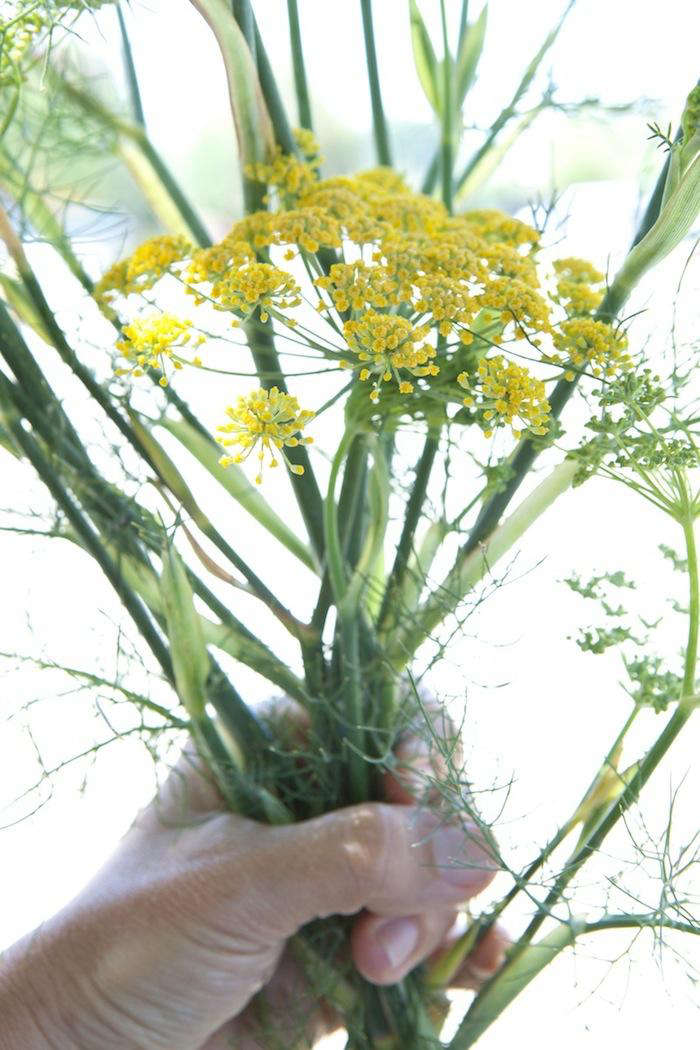I’m not supposed to love feral fennel, but I can’t help it.
Sure, it’s a weed. But with feathery fronds and bright clusters of flowers, fennel fills the air with a scent of anise. Grilled fennel bulbs are delicious, and I add a dusting of golden pollen to many dishes. This week fennel was everywhere in Northern California: alongside roads, popping up through sidewalk cracks, and filling empty lots. So I grabbed some and took it home, without qualms (fennel is crowding out native plants in some areas, like the nearby Marin Headlands). However, I avoid roadside fennel due to exhaust from cars.
Photographs by Marla Aufmuth.

Above: The bulbs are best eaten when the plants are young. Tender, young stalks are good grated into salads, sliced lengthwise and grilled, or even roasted and pureed into soup. Older stalks can be very fibrous, though.

Above: Stalking the prey: I get them young, before they are more than a month or so old. After the plants flower, I use the golden blossoms to add a slight flavor of anise to a dish. I toss them into a white wine sauce for clams. Here’s a recipe for Linguine with Clams and Fennel, via Epicurious.

Above: My favorite way to use fennel is to harvest the blossoms for pollen.

Above: Here’s how I do it: Put ten flowers with 6-inch stems head first into a brown paper bag. Tie the bag with brown twine, but not too tightly; you want a little airflow. Store the bag in a dry, cool area. After a few weeks, shake the bag vigorously and discard stems and flowers. The pollen will remain in the bottom of the bag. Transfer it to a spice container or small envelope.

Above: Pinch this golden dust over dark chocolate, or mix it with a touch of sea salt and sprinkle it on fish or scallops. You can also combine it with butter to dress vegetables, or with crí¨me fraiche to add to soups.
For more of our favorite foragers’ finds, see What You Can Do With a Loquat: Alcohol is Involved.









Have a Question or Comment About This Post?
Join the conversation